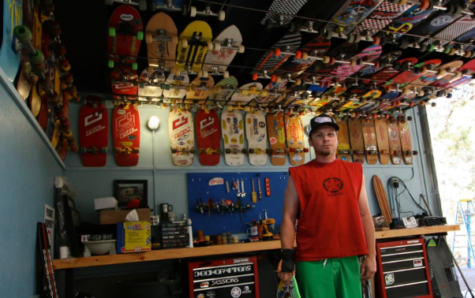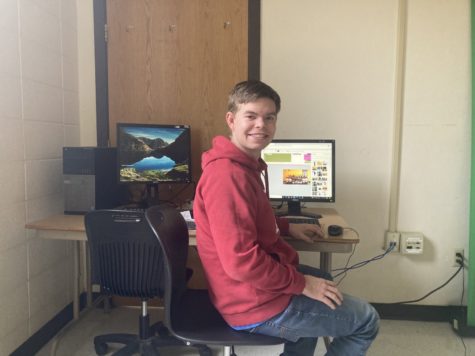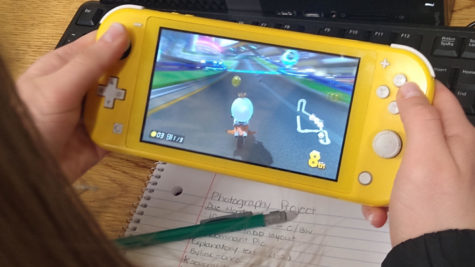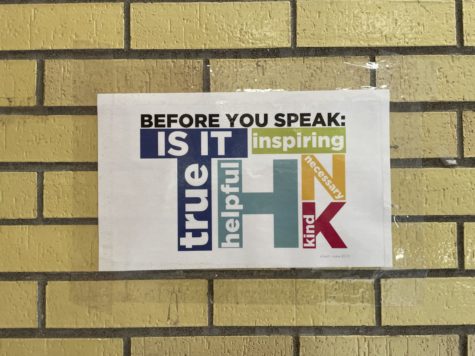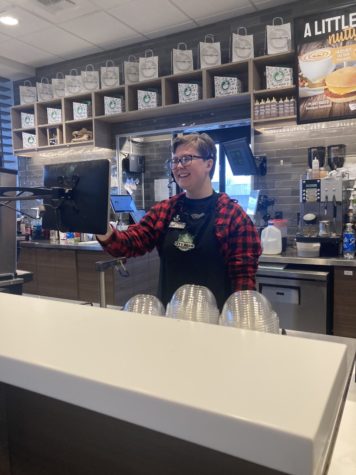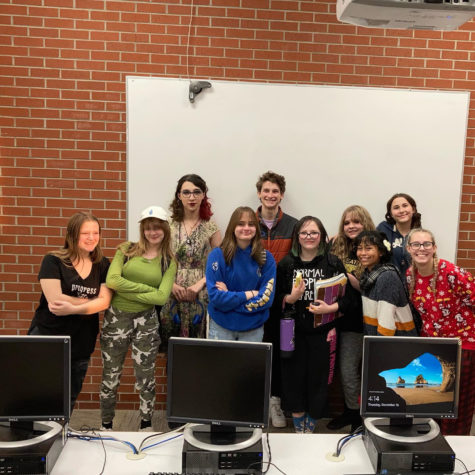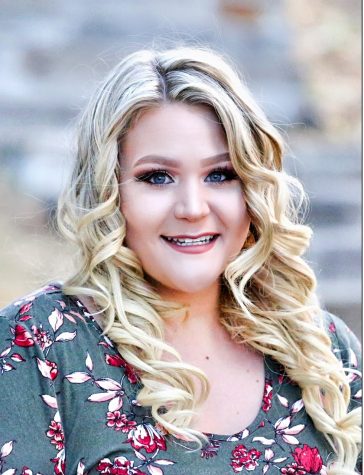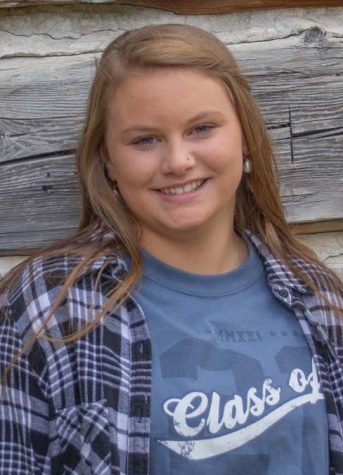All-Girls Auto Tech takes shop by storm
February 28, 2018
Not many people outside of auto shops know their way around a car engine these days.
Hannah Brennan isn’t one of them. Enrolled in Consumer Mechanics, the junior has already learned the basics of her vehicle and is ready for more. At the end of this semester-long course, she will be able to disassemble and reassemble the small engine, identify conditions of parts by using manufacturers’ labels, and make the engine run. Brennan will also be proficient in oil changes and tire rotations.
“Knowing how to change a tire or oil is super important,” Brennan said. “I really wanted to learn the basics of cars and how they work.”
The all-girls environment of Consumer Mechanics contributes to the comfortable environment.
“There aren’t too many of us in there, but it’s very relaxed and we learn a lot,” Brennan said.
Jodi Koterba has taught at CMR for 14 years and has led Consumer Mechanics for the last eight. She has it down to a science: in just one semester, students talk about how to shop for fluids, how to buy windshield wipers, and how to pick out and rotate tires.
“We take apart a small engine and put it back together, so you understand how the car runs and what the basic systems of the vehicle are,” Koterba said. “We talk about all the fluids, so that when you go to have it maintained…they can’t tell you that you need to have your headlight fluid changed because there really isn’t any headlight fluid.”
Koterba teaches from a textbook but includes many demonstrations for the students, she said. Plus, “there’s also hands-on,” Koterba added, “and the kids work in partners. I’m right there to help them, but the idea is we want them to understand what happens in those things.
“When you see a commercial that says [a vehicle] is a 3.5 liter V8 with 1200 horsepower, we have actually talked about what all those numbers mean so that you can compare.”
This format works particularly well for an all-girls class.
“Girls want to know all the background [of the tool they’re working with]. They want to know what everything does, how it’s supposed to work, what it’s supposed to do,” Koterba said. “Show them how to make it work, and then they’ll go at it.”
She said she encourages students to touch the parts and try them out so that they can truly understand what they are working with.
Consumer Mechanics students also learn about car insurance. Koterba said she brings in an insurance agent each year to speak with students about how to go about purchasing insurance as well as the differences between each type.
“I think the Consumer Mechanics class should be taken by everybody who’s going to own a car,” Koterba said.
Junior Mallory Bosley chose the course in order to learn more about the basics of automobiles, she said, and other “good-to-know operations about cars.” Like Brennan, she appreciates the all-female environment.
“I definitely think it makes it more comfortable,” Bosley explained. “It’s reassuring to know that you’re not the only one who is clueless. It makes it better to learn together and help each other out along the way.”
As with all her shop classes, Koterba said she assumes that students enter Consumer Mechanics with no knowledge of automobiles. Those who are apprehensive of the course need not be, Koterba said, since she goes through every single tool with them. She is extremely clear about her expectations. Students need to commit to solid attendance, especially since the course is heavily dependent on student participation, but Koterba is more than happy to help them through the hands-on class.
During the first few weeks of Consumer Mechanics, students work from the book and learn about auto basics, including engine composition, electricity, car history, and general safety. Their first project is the engine, which the students will begin taking apart this week.
“We’ve looked at a few cars and just finished up our tools unit,” Bosley said. “I’m very excited to begin physically working on our cars.”
The auto shop, housed in a separate annex, provides a spacious and safe environment for students. Despite the “all-girl” label on Consumer Mechanics, these lessons are certainly not limited to girls — a similar course, Power Tech, is a mixed-gender class that concentrates more on car engines than fluids or tires. Power Tech is geared more to those interested in a career in automobiles, Koterba said.
“[In Consumer Mechanics], we in no way expect them to be able to go out and get a job doing that [type of engine work],” Koterba explained.
Though Bosley isn’t looking for a job working with cars, she believes the information she’s gleaning in Consumer Mechanics will be useful far beyond the scope of the semester.
“The biggest goal of mine would be learning how to change [and] rotate tires,” Bosley said. “I think it’s important to know in emergency car situations.”
But, she clarified, “I’m excited to learn all the basics. I think they will all be useful.”
Said Koterba: “I’ve never had somebody stay in the class and regret it. By the time it’s over they’re all like, ‘Well this was really good. I’m glad I did this.’”

